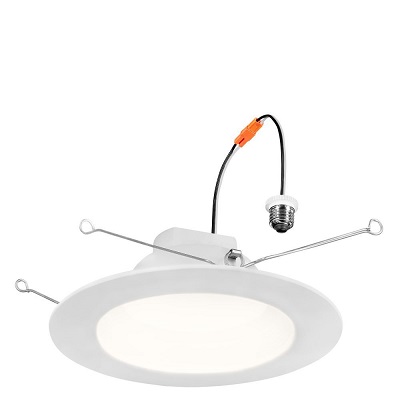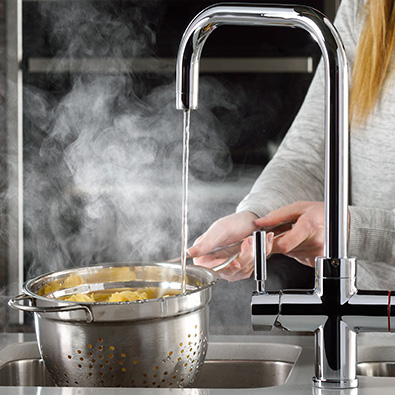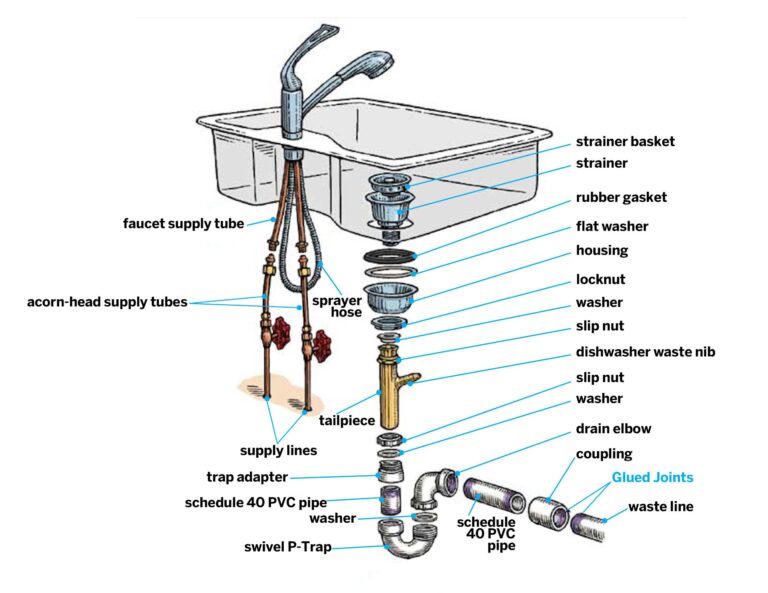Recessed Lighting Can Vs Canless
Recessed lighting can and canless lighting are both popular choices when it comes to lighting a room. Both offer a modern look and can be used to highlight specific areas of a room. However, there are some key differences between the two. Can lighting refers to traditional incandescent lighting that is housed in an aluminium can. Canless lighting is a form of LED lighting that does not require a can, allowing for a more streamlined look. Can lighting is more affordable, but canless lighting is more energy-efficient and offers better light output. Additionally, canless lighting is easier to install and requires less maintenance than can lighting. Ultimately, the choice between can and canless lighting comes down to personal preference and the specific needs of the space.
Overview of Recessed Lighting
Recessed lighting is a great way to add a modern yet elegant touch to any home or office space. It is one of the most popular lighting solutions for both indoor and outdoor applications, offering a wide variety of options in terms of size, shape, and style. But when it comes to recessed lighting, it is important to understand the differences between the two main types of fixtures: recessed light cans and canless recessed lights.
Recessed light cans are the traditional form of recessed fixtures, which consist of a housing, trim, and bulb. They are typically installed in the ceiling and provide a bright, even light. Canless recessed lights, on the other hand, are a more modern and energy-efficient lighting solution. They are typically installed with a thin modular track system that helps to provide even illumination.
When considering which type of recessed lighting is right for your home or office, it is important to consider the size and shape of the area being lit, the amount of light desired, the energy efficiency of the fixture, and the installation process. Both recessed light cans and canless recessed lights can provide great lighting solutions, but it is important to weigh all of the options before making a decision.
Benefits of Recessed Lighting
Recessed lighting is a popular choice for modern homes, with its sleek, unobtrusive design and powerful illumination. It offers a unique way to brighten up a room and create an inviting atmosphere. While there are different types of recessed lighting available on the market, one of the most popular options is recessed can lighting. But what about canless recessed lighting?
Canless recessed lighting offers several advantages over traditional recessed can lighting. First, it is much easier to install. Canless fixtures do not require housing and can be installed directly into the ceiling, eliminating the need for an electrician. This makes it a great option for DIYers who want to save time and money. Additionally, canless recessed lighting is more energy-efficient than can lighting, since it does not require a can to contain the bulb.
Furthermore, canless recessed lighting has a longer lifespan than can lighting, since it is not exposed to the same levels of heat and humidity that cans are. This means that you won’t need to replace your light fixtures as often, saving you money in the long run. Lastly, canless recessed lighting can provide a more uniform and consistent light pattern than can lighting, creating a warm and inviting atmosphere in any room.
Overall, canless recessed lighting offers numerous benefits over traditional can lighting. It is easier to install, more energy-efficient, has a longer lifespan, and provides a more uniform and consistent light pattern. For these reasons, it is an excellent choice for anyone looking to upgrade their home lighting.
Types of Recessed Lighting
When it comes to recessed lighting, there are two main types to choose from: can and canless. Both offer lots of benefits for different purposes, so it’s important to know the difference between the two before deciding which type of lighting is best for your project.
Can lighting uses a metal can or housing to contain the light, while canless lighting is simply a fixture with no can or housing, making it much smaller and less bulky. Can lighting can be installed in the ceiling, while canless lighting is typically installed on the wall.
Can lighting is ideal for larger spaces, such as a living room, because it takes up more space and can provide more light. Canless lighting, on the other hand, is ideal for smaller spaces, such as a bathroom or hallway, since it takes up less space and can provide plenty of light without being overpowering.
When it comes down to it, both types of lighting have their own advantages and disadvantages. It’s important to consider your needs and budget when deciding which type of recessed lighting is best for you. With the right information, you can make the right decision for your specific project.
Advantages of Can vs
Canless Recessed Lighting
Recessed lighting can be a great addition to any home, providing improved aesthetics, better illumination, and an overall modern feel. But when it comes to choosing the right recessed lighting for your home, there’s a lot to consider. One of the biggest decisions is whether to go with recessed lighting with a can or canless. Both options offer distinct advantages and disadvantages, so it’s important to understand the differences before making a final decision.
Can lighting involves installing a metal can in the ceiling with the light source and trim inside. Canless lighting on the other hand, requires no can, making installation easier and quicker. Both types of recessed lighting have their own unique advantages.
Can lighting is more aesthetically pleasing in many cases, as the can is often hidden in the ceiling, making it nearly invisible. Canless lighting, on the other hand, is more affordable and easier to install. It also offers a more streamlined look, as there is no can protruding from the ceiling.
When it comes to energy efficiency, both can and canless recessed lighting can provide excellent illumination. Can lighting, however, provides superior energy efficiency and can last up to 10 times longer than canless models.
In the end, the decision between can and canless recessed lighting will depend on personal preference and the type of installation. Can lighting is more aesthetically pleasing, energy efficient, and longer lasting, while canless lighting is more affordable and easier to install. Regardless of the option chosen, both can and canless recessed lighting can provide excellent illumination and improved aesthetics.

Disadvantages of Can vs
Canless
When it comes to lighting fixtures, there are two main types of recessed lighting cans – can and canless. Each has their own advantages and disadvantages, and it’s important to understand them so you can make an informed decision when deciding which type of recessed lighting to install. Can lighting fixtures have several disadvantages that canless fixtures don’t. For one, they require more time and money to install. Can fixtures require a larger hole to be cut in the ceiling, which takes more time and effort to complete. Additionally, can fixtures are more expensive to purchase due to the need for an additional electrician to install them. Can fixtures also require more maintenance since they are more prone to dust and dirt build-up. Finally, can fixtures can be difficult to clean since they are situated in a deep recess. Canless recessed lighting fixtures, on the other hand, are the more popular choice because of their ease of installation and maintenance. Canless fixtures don’t require any additional electrician work and are installed directly in the ceiling. Additionally, they are more affordable to purchase, and they don’t require as much maintenance since they are situated above the ceiling. Lastly, canless fixtures are easier to clean since they are situated in an open area.
No matter which option you choose, it’s important to understand the pros and cons of each type of recessed lighting so you can make an informed decision. Can and canless recessed lighting fixtures both have their place in the lighting world, and each can be beneficial in different situations.
Installation Considerations for Can vs
Canless Recessed Lighting
Recessed lighting is a popular choice for modern homes due to its ability to provide bright illumination in tight spaces. While there are several types of recessed lighting, the two most common are can and canless. Both options have their own merits, so it’s important to consider your specific needs and preferences before making a decision. In this article, we’ll compare and contrast the two styles of recessed lighting, and provide some tips for selecting the best option for your home.
Can recessed lighting is the traditional type of recessed lighting, and requires a housing or canister to be installed in the ceiling. This type of lighting is more expensive and takes longer to install, but the housing provides superior insulation and protection from heat. Canless recessed lighting, on the other hand, is a newer type of recessed lighting that does not require a canister. It is much easier to install and is more affordable, but provides less insulation and protection from heat.
When it comes to installation considerations, can recessed lighting is more complex and requires more time and effort. It must be installed within the ceiling, and requires a professional to do the job properly. Canless recessed lighting, however, is much simpler and can be installed in as little as 15 minutes. Furthermore, the installation process is much less involved, making it the ideal choice for DIYers.
In conclusion, there are pros and cons to both can and canless recessed lighting. Ultimately, the best option for your home will depend on your specific needs and preferences. Consider the installation process, cost, insulation, and protection from heat before making your final decision.
Cost Comparison of Can vs
Canless Recessed Lighting
Recessed lighting is one of the most popular and effective ways to light up a room. While installing recessed lighting, homeowners have to choose between two main types of lights – Can and canless. Selecting the right type of recessed lighting can be a difficult decision since both have their own set of advantages and disadvantages.
When it comes to cost, can lighting is usually more affordable than canless lighting. Can lighting uses a housing fixture that is installed in the ceiling, which is more expensive than canless lighting. On the other hand, canless lighting is more expensive since it doesn’t require a housing fixture and uses a light bulb that is connected directly to the ceiling.
In terms of energy efficiency, canless lighting is usually more energy-efficient than can lighting. Canless lighting does not require additional housing fixtures, which means it is more energy-efficient than can lighting. Additionally, canless lighting is usually more efficient since it does not require additional wiring.
Overall, while can lighting is more affordable than canless lighting, it is not as energy-efficient, and it requires additional wiring and housing fixtures. On the other hand, canless lighting is more expensive but it is more energy-efficient, and it does not require additional wiring or housing fixtures. Homeowners should weigh both the cost and energy efficiency of both types of recessed lighting before making a decision.
Summary & Conclusion
When it comes to recessed lighting, there is no one-size-fits-all solution. Depending on the size of the room, the type of light fixture, and the desired level of brightness, homeowners have to decide which type of recessed lighting is best for their space. Can lighting, with its classic look, can provide an even spread of light that is ideal for larger rooms. On the other hand, canless lighting, with its more modern design, can provide a more focused light that works well for smaller spaces. Ultimately, the decision comes down to personal preference and budget. Both types of recessed lighting can provide the same level of brightness and both have their pros and cons. Ultimately, the best solution is to evaluate your needs and determine which type of lighting will best meet those needs.
FAQs About the Recessed Lighting Can Vs Canless
1. What are the advantages of recessed lighting cans?
A: Recessed lighting cans offer more flexibility in terms of the shape of the light, the wattage of the bulb, and the distance of the light from the ceiling. They also provide better heat dissipation and are more secure when installed.
2. What are the advantages of canless recessed lighting?
A: Canless recessed lighting is easier to install since it does not require the use of a can or housing. It also allows for higher wattage bulbs and the ability to direct light in a specific direction.
3. Are canless recessed lights more energy efficient than can lights?
A: Yes, canless recessed lights are more energy efficient than can lights due to their direct connection to the power source. They also require less maintenance than can lights since they do not have a housing or can that needs to be replaced periodically.
Conclusion
In conclusion, recessed lighting can and canless both offer great benefits when used in certain applications. Recessed lighting can offer the ability to adjust the angle of the bulb, while canless offers a more energy efficient option. Both can be used to provide excellent lighting solutions, depending on the desired result. Ultimately, the best choice for lighting needs will depend on the individual requirements.






